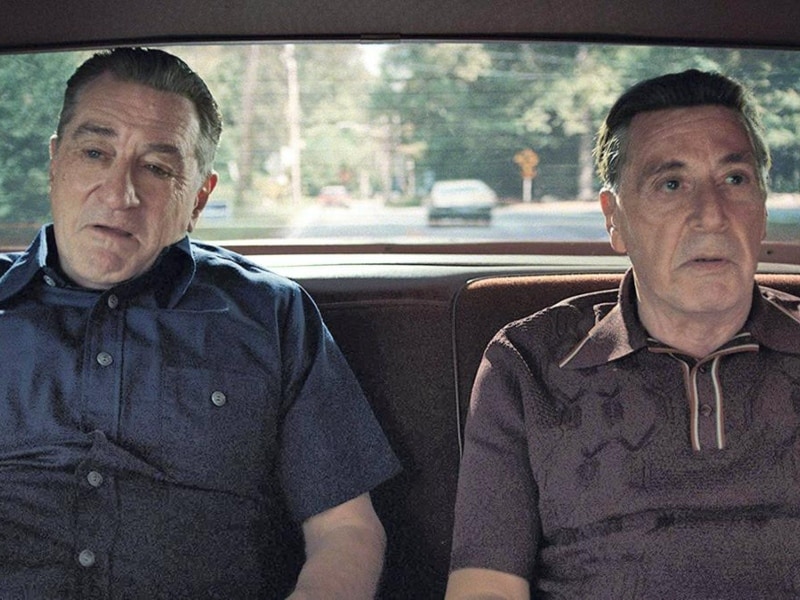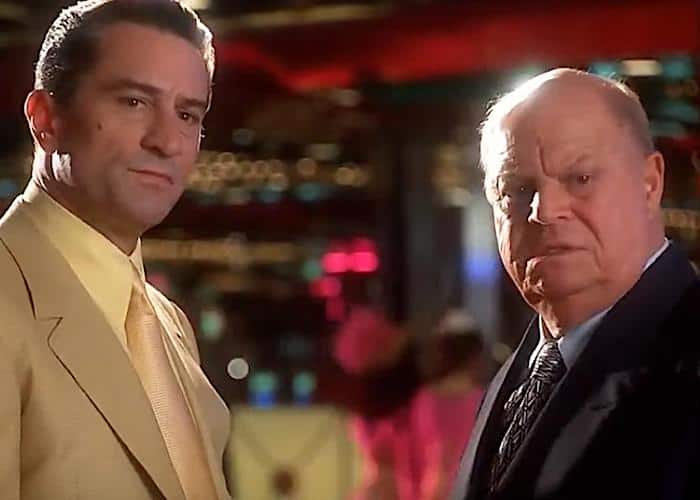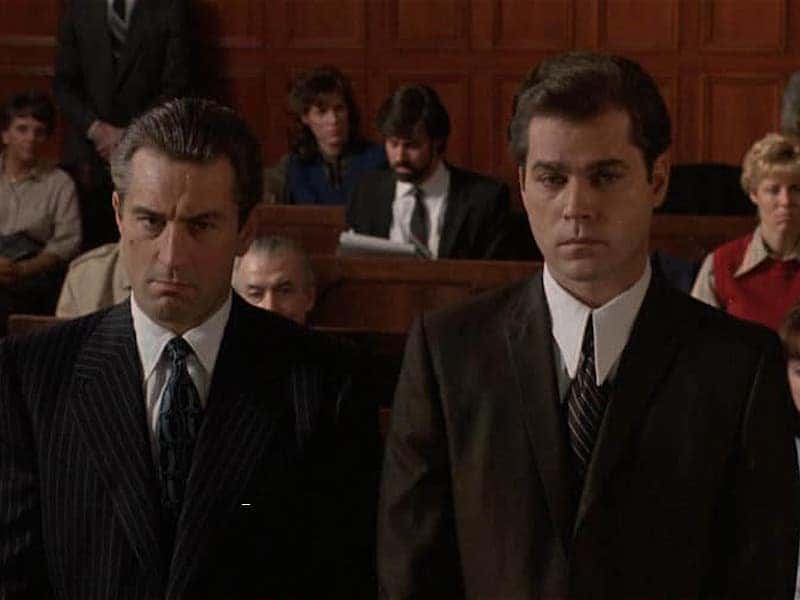In the sixth episode of Pretend It’s a City, Martin Scorsese‘s new Netflix docuseries starring himself and Fran Lebowitz, the filmmaker and the author are asked a simple question: How did you meet?
While neither is quite sure, the legend goes that the two always found themselves in conversation at the kind of parties that icons of New York attend. So, they became friends. Lebowitz recounts the origins of their friendship like the banal anecdote it used to be. But now, a year into a pandemic, the thought of meeting anyone anywhere is enough to make their friendship seem like a fairytale. And perhaps it is: how many friendships get such a public display?
Before Pretend It’s a City, there was Public Speaking, the 2010 feature documentary Scorsese made for HBO about Lebowitz. If it’s useful to compare one work to the other, the original, as is often the case, is better than the remake: tighter, funnier, and more original in form. Public Speaking, I’ve argued, should be considered among Scorsese’s best work.
But there is at least one thing about Pretend It’s a City, apart from the format, that marks a notable departure from Public Speaking, something that makes clear that while the new project is similar to its predecessor, it is, in fact, something new. Of course, this is true of all of Scorsese’s work (despite the claim by Twitter trolls complaining that he only makes mafia movies).
In Public Speaking, Scorsese appears at the beginning of the film to plant a kiss on Lebowitz’s cheek as she arrives at the Waverly Inn. Scorsese then takes his seat on the edge of the frame, where he asks questions, sometimes responds to her answers, and laughs so deeply and bodily one fears he might roll over at any moment.
That laugh is also on full display in Pretend It’s a City, and it’s there where one finds the key difference between the two works: the man himself. With Public Speaking, Scorsese directs a portrait of a friend. In Pretend It’s a City, he documents a friendship, joining Lebowitz on stage in conversation throughout the series and, at one point, in the halls of the New York Public Library. Who could blame him? Martin Scorsese is like us. He just wants to hang out with his friends.

It is this contemplation of friendship that one feels in much of Scorsese’s recent work. Yes, this is somewhat obvious. In The Irishman, Scorsese not only reunites with some of his closest friends and collaborators but also directs a scene in which one friend (Joe Pesci as Russell) asks another (Robert De Niro as Frank) to kill a third (Al Pacino as Jimmy Hoffa).
Rather, Scorsese’s appearance in Pretend It’s a City had me thinking about smaller moments in his films that gesture toward his understanding of friendship. If we return again to The Irishman and look beyond Pesci, De Niro, and Harvey Keitel, we find another friend who, in the film, is a character but was once very much real: the comedian Don Rickles, portrayed by Jim Norton.
Devotees of the film and the comic will know that the real Rickles played casino manager Bill Sherbert in Scorsese’s Casino (1995), a fine but mostly unmemorable performance, except perhaps when Joe Pesci beats him over the head with a telephone in pursuit of his winnings. In One Night Only, a 2014 TV special in tribute to Rickles, Scorsese explains the casting decision: “[Las Vegas] was a character in that movie and Don, you were the link to that town. You gave it authenticity. You gave it a sense of danger,” he says, before roasting Rickles. “At least that was the theory anyway.”

True or not, the inclusion of Rickles, who performed in Las Vegas from the days of the Rat Pack until his death in 2017 at the age of ninety, lends a certain authenticity to the image. One of Casino’s strengths is its way of blending fiction with fact, like when De Niro as Ace describes how to surveil the casino floor. Or the implications of a hole in the desert. When the aging Rickles is on-screen in Casino, we see before us not just Don Rickles as “Billy Sherbert,” but the personification of Las Vegas and its history.
Norton as Rickles is on screen for, by my count, less than a minute in The Irishman. His performance at the Copacabana provides a backdrop to a conversation between Frank and Russell about “Crazy” Joe Gallo,” who they believe ordered the shooting of Italian American Civil Rights League leaders. Rickles makes fun of everybody — except, well, “those Italians,” he says, pointing at Gallo and the other mobsters in the audience. Everybody laughs. Just as the real Rickles embodied the real Las Vegas, the fictional Rickles invites us to imagine what it might have been like to be there, at the Copacabana in its heyday.
At the end of the set, Joey walks up to Russ and says of the Italian American Civil Rights League pin on his lapel, “You really believe in that bullshit league?” Frank stands up at the sign of disrespect and moves Joey away from Russ. Frank tells Joey he can’t say things like that. “Why not,” Joey asks, “Rickles is the only one who can make jokes?” Yes. He is. So much of The Irishman is about hierarchy: who can say and do what to who and when. The hierarchy is what compels Frank to defend Russ at that moment, and it’s why he shoots Jimmy in the back of the head later on.
While the inclusion of Rickles makes thematic and historical sense — Scorsese told talk show host Jimmy Kimmel that the jokes were taken from first-person accounts of Rickles’s act that night — Scorsese did not have to include his friend Rickles. But, as Scorsese said in that same interview with Kimmel, “We had to get Don in the film. We had to get him in.” It is as if by writing Rickles into the film, Scorsese was looking to hang out with his friend one last time.

Perhaps the most famous line on friendship in Scorsese’s work comes in Goodfellas (1990), just after young Henry Hill gets “pinched” for the first time. Jimmy (De Niro) turns to Henry after the charges are dismissed and tells him he has just learned two things: “Never rat on your friends, and always keep your mouth shut.”
In FSR’s list of the best films of the 2010s, I wrote about The Wolf of Wall Street (2013) and the obvious parallels between Ray Liotta’s Henry Hill and Leonardo DiCaprio’s Jordan Belfort. Both enter chaotic, seemingly lawless worlds as outsiders then make it, get consumed by it, and finally come crashing down by way of the usual vices (sex, drugs, money) and law enforcement.
At the end of Goodfellas, Henry turns on his aging friends and sends them to prison. He opens his mouth. But in The Wolf of Wall Street, Jordan, under the pressure of law enforcement doesn’t rat on his friends. When he visits Donnie (Jonah Hill) at the offices of Stratton Oakmont, he writes him a note: “Don’t incriminate yourself. I’m wearing a wire.”
The next day, Jordan wakes up to a house full of FBI agents. One of them holds up the note and then takes Jordan to jail. A gesture of friendship leads to Jordan’s arrest, the arrest of his friends, and the end of Stratton Oakmont. Was it stupid? Perhaps. But they were all going down anyway. And unlike Henry Hill, who lost everything, Jordan Belfort at least kept his friends.
It’s possible that my search for friendship in Scorsese’s recent work is merely an indication of what I miss most about pre-pandemic life. But I think the message is there: keep your friends close, and hang out with them whenever you can.

0 comments:
Post a Comment